

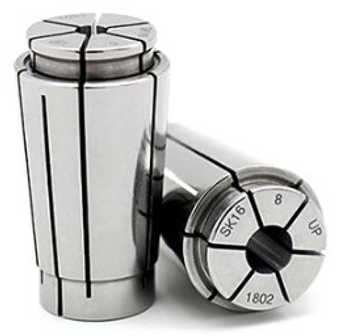
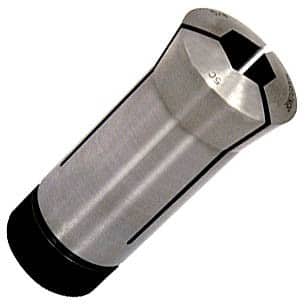
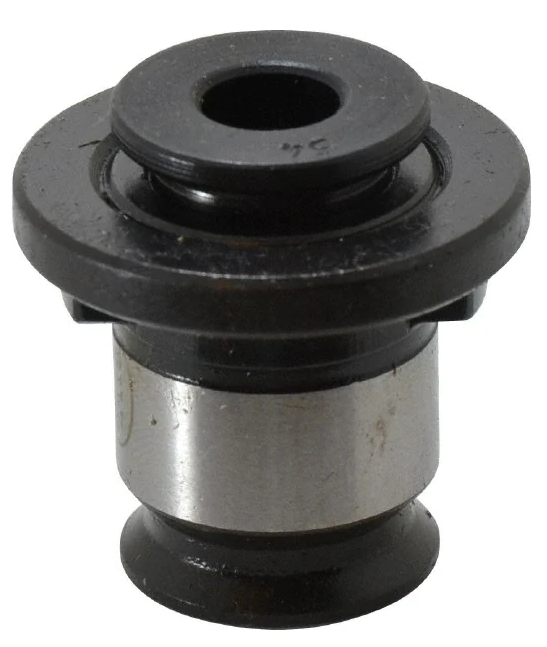
Collets are used in conjunction with a collet chuck to hold a variety of different tools such as drills, reamers, and taps. They come in many different types and sizes, the most common of which will be described on this page.
Individual Listings vs. Sets / Lots
Not all collets are worth enough to for us to sell individually. In these cases we want to sell them as multiple-piece sets of the same collet type with different (but ideally close or sequential) capacities. We also want to try not to mix metric and imperial whenever possible. Refer to the list below for how each common collet type should be listed:
ER11 - New: 3-5pc Sets, Used: 8-10pc Sets
ER16 - New: Individual, Used: 5-10pc Sets
ER20 - New: Individual, Used: 5-10pc Sets
ER25 - New: Individual, Used: 5-10pc Sets
ER32 - New: Individual, Used: 5-8pc Sets
ER40 - New: Individual, Used: 3-5pc Sets
ER50 - Individual (New or Used)
TG50 - New: Individual, Used: 5-10pc Sets
TG75 - New: Individual, Used: 3-5pc Sets
TG100 - New: Individual, Used: 5-10pc Sets
TG150 - Individual (New or Used)
TG200 - Individual (New or Used)
SK (Any Size) - New: Individual, Used: 5-10pc Sets
DA300 - New: 3-5pc Sets, Used: 8-12pc Sets
DA200 - New: Individual, Used: 5-10pc Sets
DA100 - New: Individual, Used: 5-10pc Sets
DA180 - Individual (New or Used)
DA400 - Individual (New or Used)
Hardinge Collets - Individual (New or Used)
Balas Collets - Individual (New or Used)
Acura-Flex (New or Used) - AF100 or larger: Individual, Others: 5-10pc Sets
Double Taper - Individual (New or Used)
R8 - Individual (New or Used)
Tapping Collets (Any Size) - Individual (New or Used)
AA (Any Size) - Individual (New or Used)
All other collets not listed here: Confirm with trainer
Tapping Collets: Do They Work?
Tapping collets should always be tested to make sure they function properly before being listed. The release collar at the top of the collet (where the tap enters) should easily compress when pushed in by hand, and then spring back into place when you let go. If the collar does not move or if it sticks, the collet should not be listed. Additionally, if a collet currently holds a tap it should be removed by pressing in the release collar and then pulling out the tap while the collar is compressed. The tap should then be assessed separately for listing.
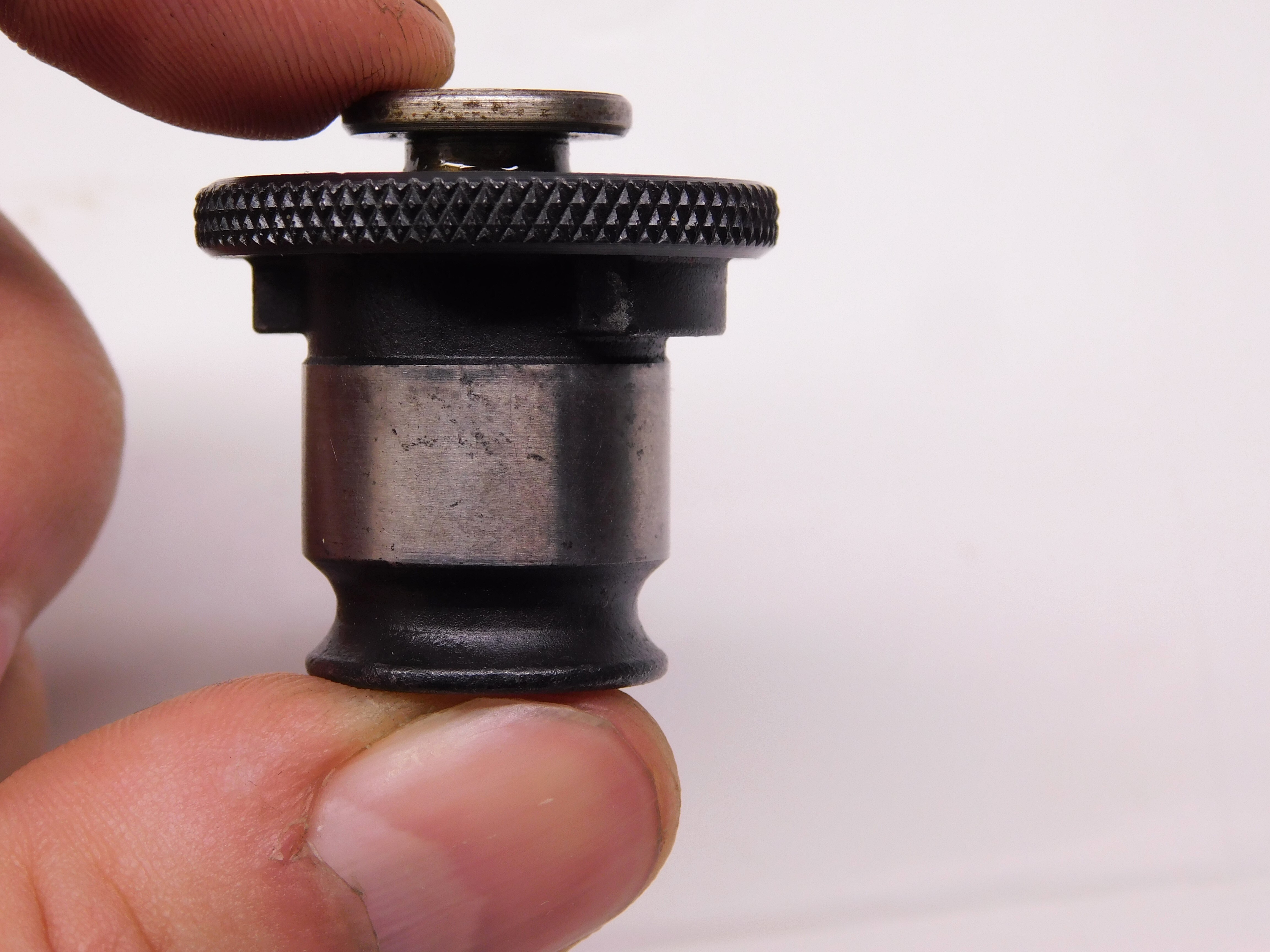
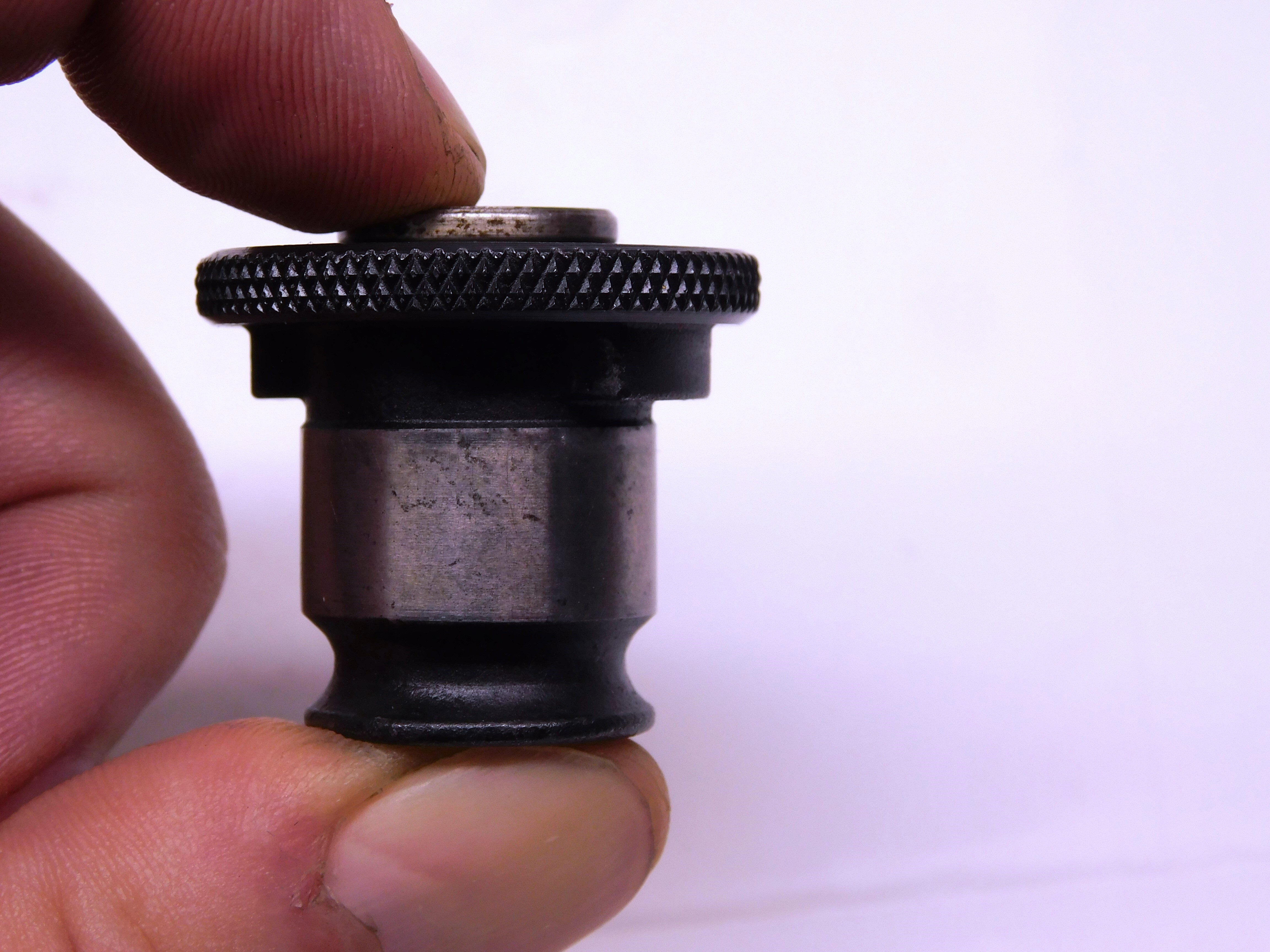
Use WD-40 and a Scotch-Brite pad to remove any rust or other residue. Wipe down with a dry rag before taking pictures.
Click here for info on how to upload pictures
1st Picture: A three-quarters (or "3D") view of the collet, with the tool holding end facing the camera. If there is any packaging, it should be included in this picture.
2nd Picture: A side view of the collet, with a tape measure at the bottom of the frame to provide size reference. Any packaging should be included in this picture as well.
3rd Picture: A close-up of the tool holding end. Make sure any labeling is readable (i.e., right-side up), if possible.
4th Picture: A close-up shot of the labeling, if it was not visible in the previous picture. Most collets have their labeling on the head, so in many cases you will not need to take this additional labeling picture.
Additional Pictures: Any damage or modification to the collet must be pictured. Use a pen to point to any damaged / modified areas. If you think additional pictures may be needed for any other reason, check with your trainer to see if they are necessary.
Please see the examples below:
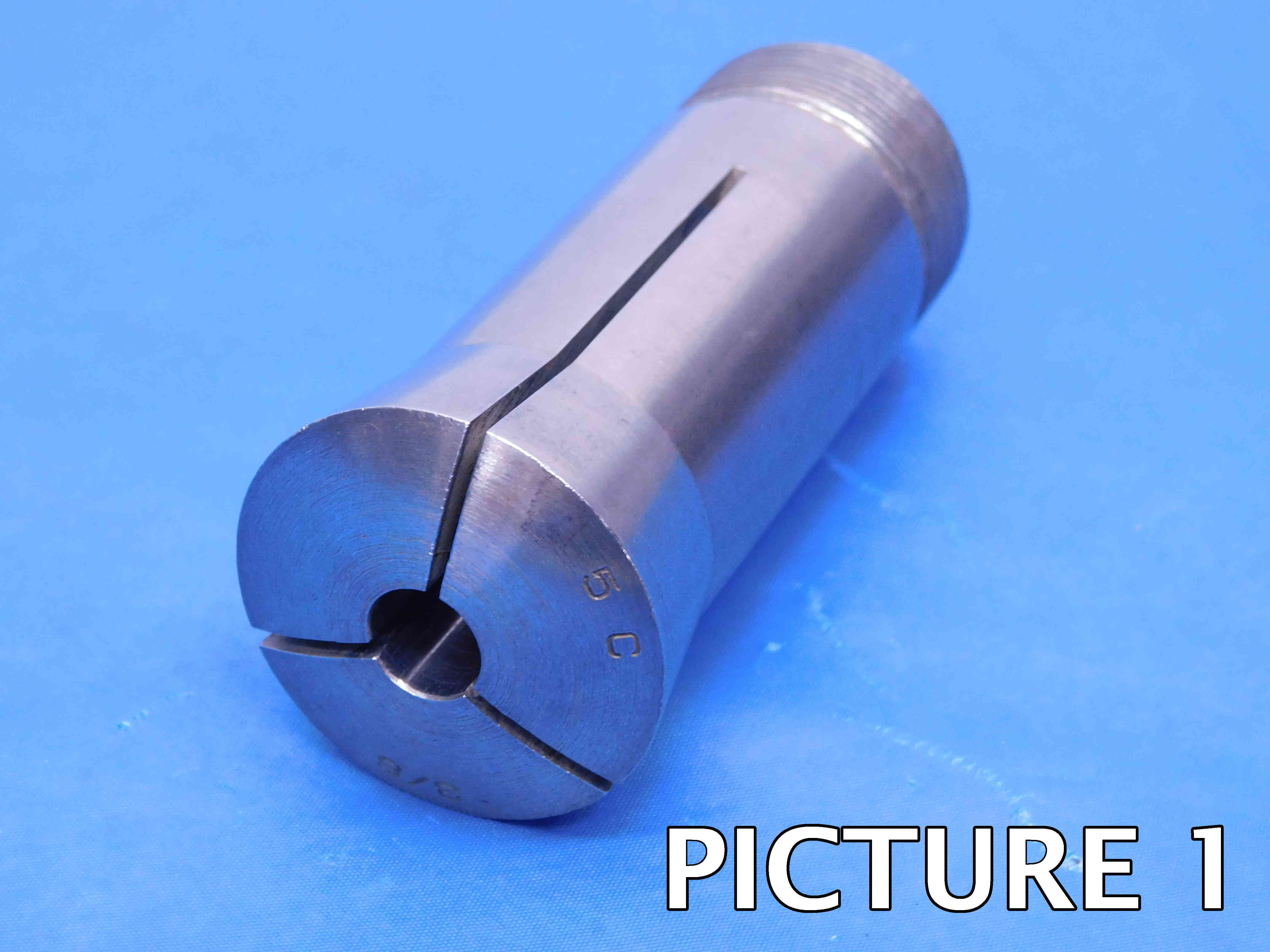
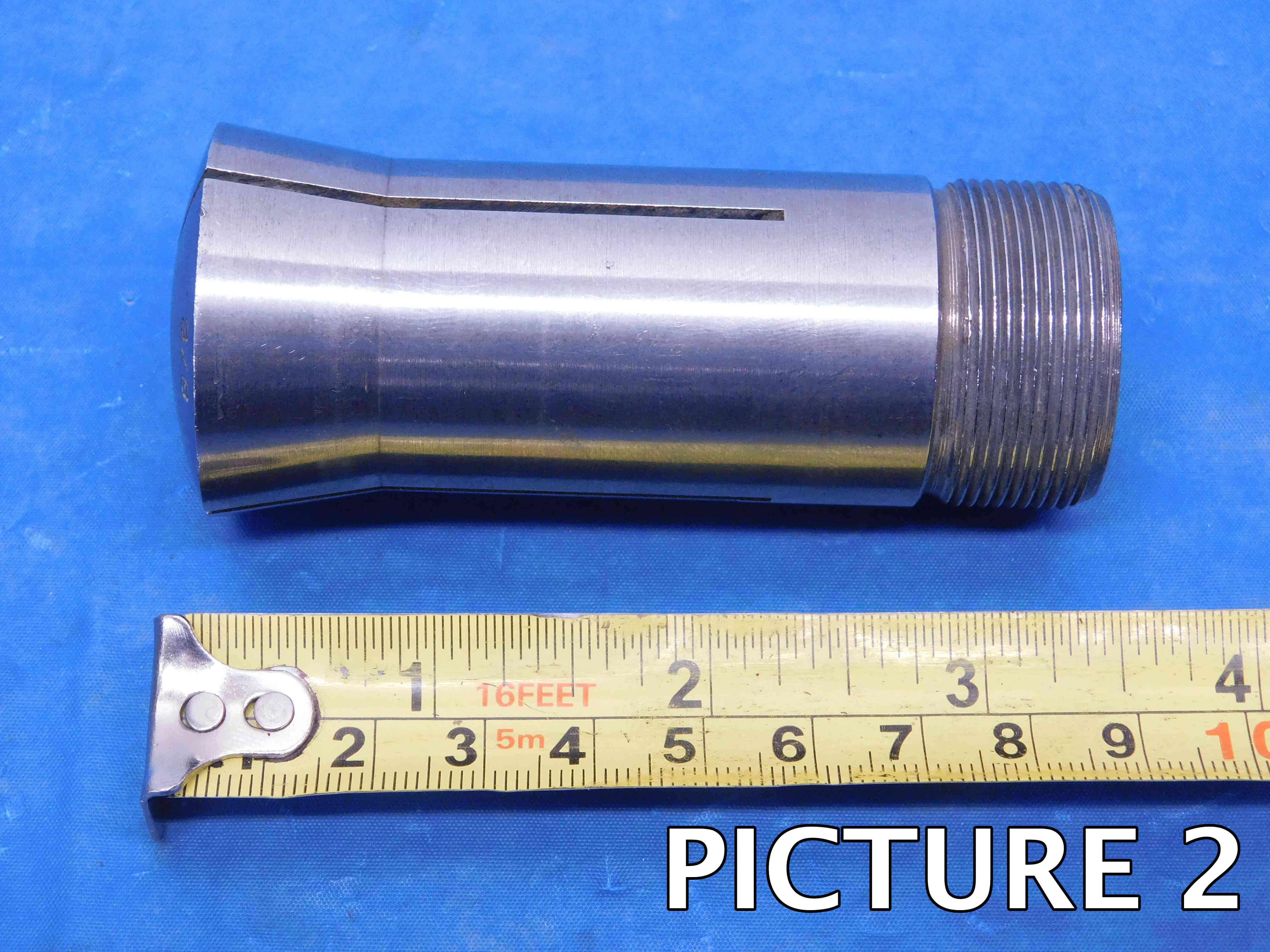
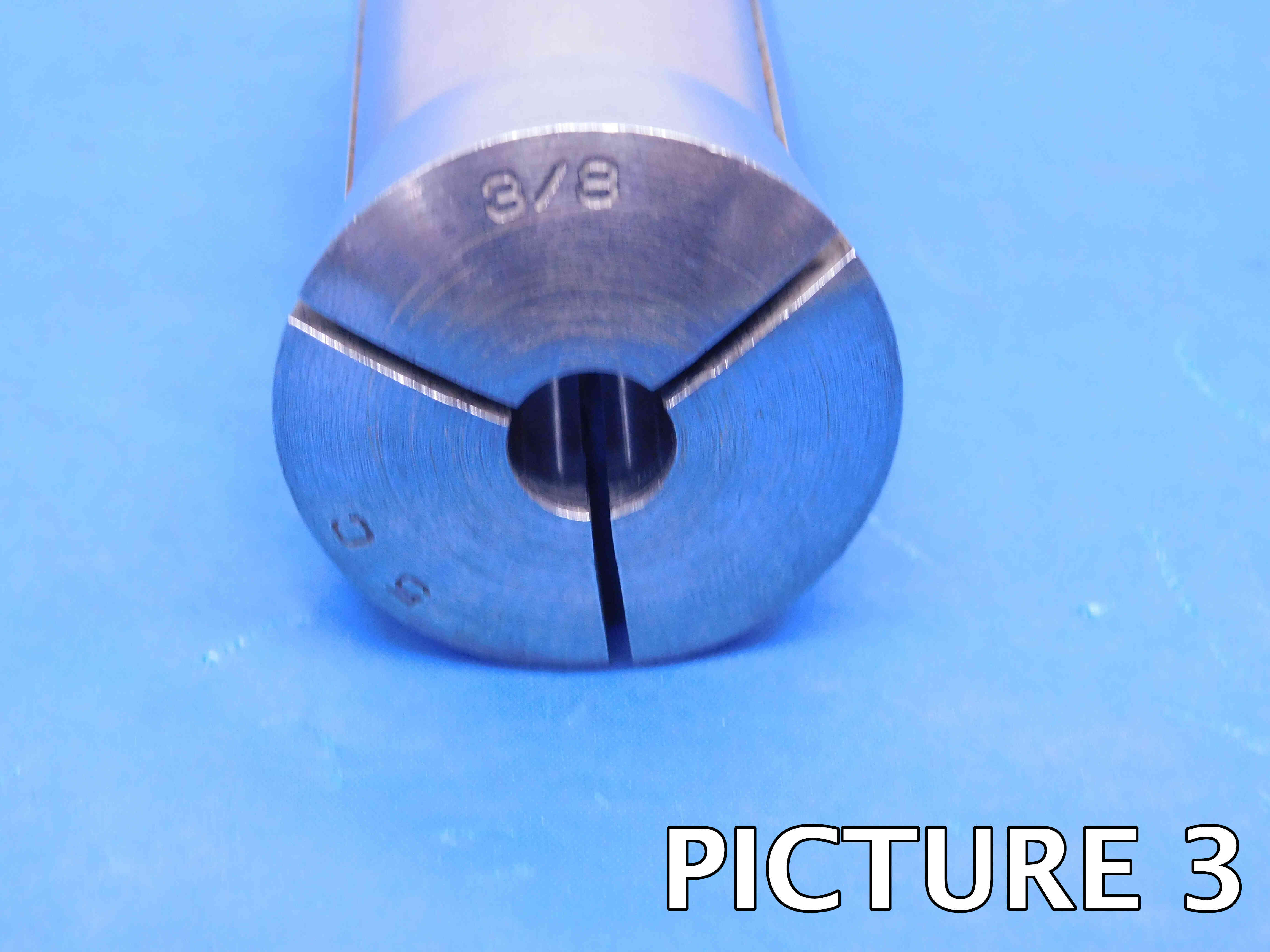

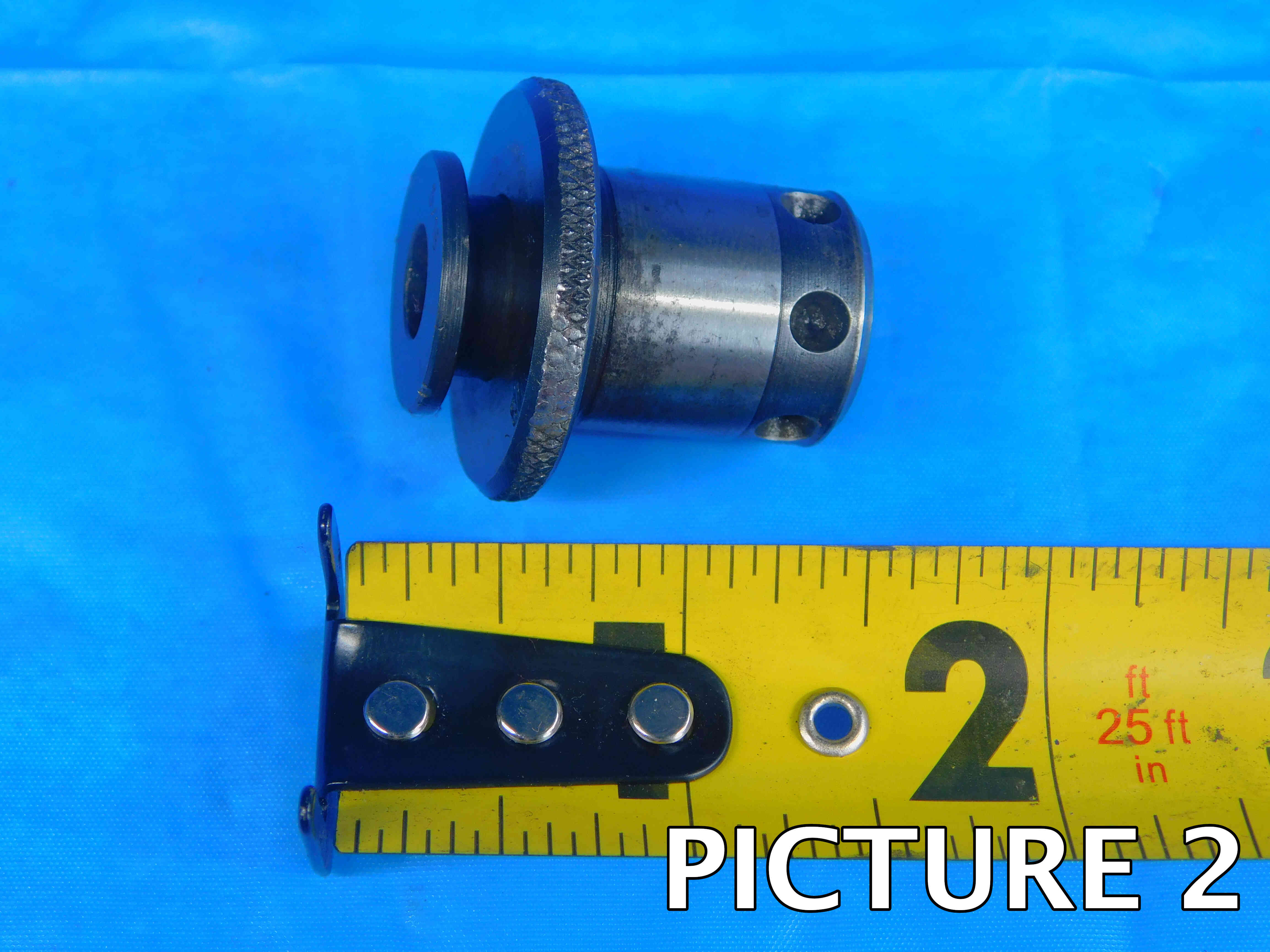
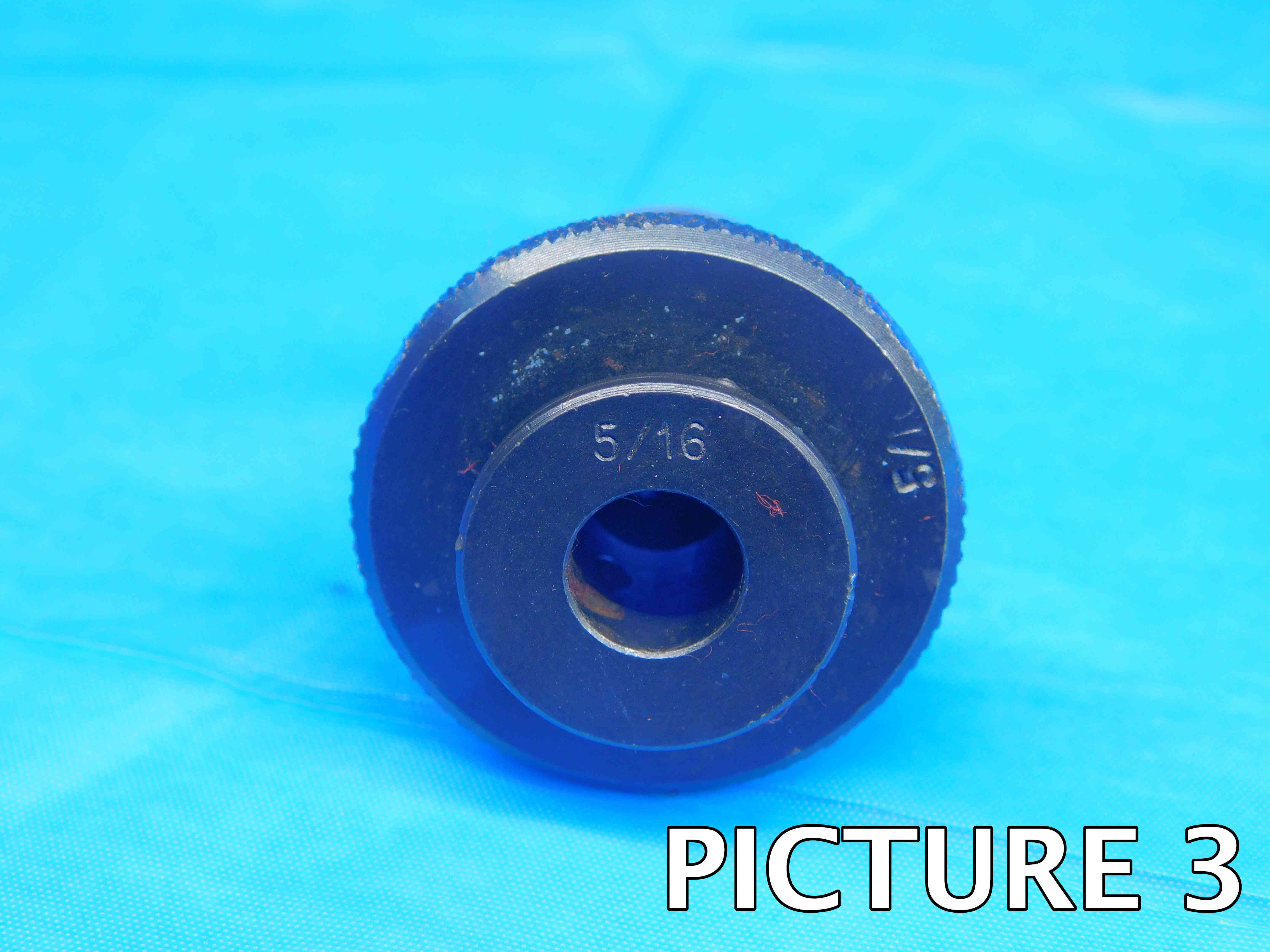
1st Picture: Stand the collets upright with a tape measure at the bottom of the frame to provide size reference. This should be primarily a side view, but taken at a high enough angle that the tops of the collets (the working ends) are visible. If there is any packaging, it should be included in this picture as well.
2nd Picture: A top-down view of the collets, showing the working ends. The tape measure should be in this shot as well. Any collets that have labeling visible in this shot should be oriented so that the labeling is readable (i.e., right-side up), if possible.
3rd, 4th, 5th Picture: Take various close-up shots of the labeling - try to get as many as possible in each shot while still being zoomed in enough to be readable. For an especially large lot, you do not necessarily need to get pictures of every collets' labeling - just capture as many as you can in a few pictures.
Additional Pictures: Any damage or modification to the collets must be pictured. Use a pen to point to any damaged / modified areas. If you think additional pictures may be needed for any other reason, check with your trainer to see if they are necessary.
Please see the examples below:
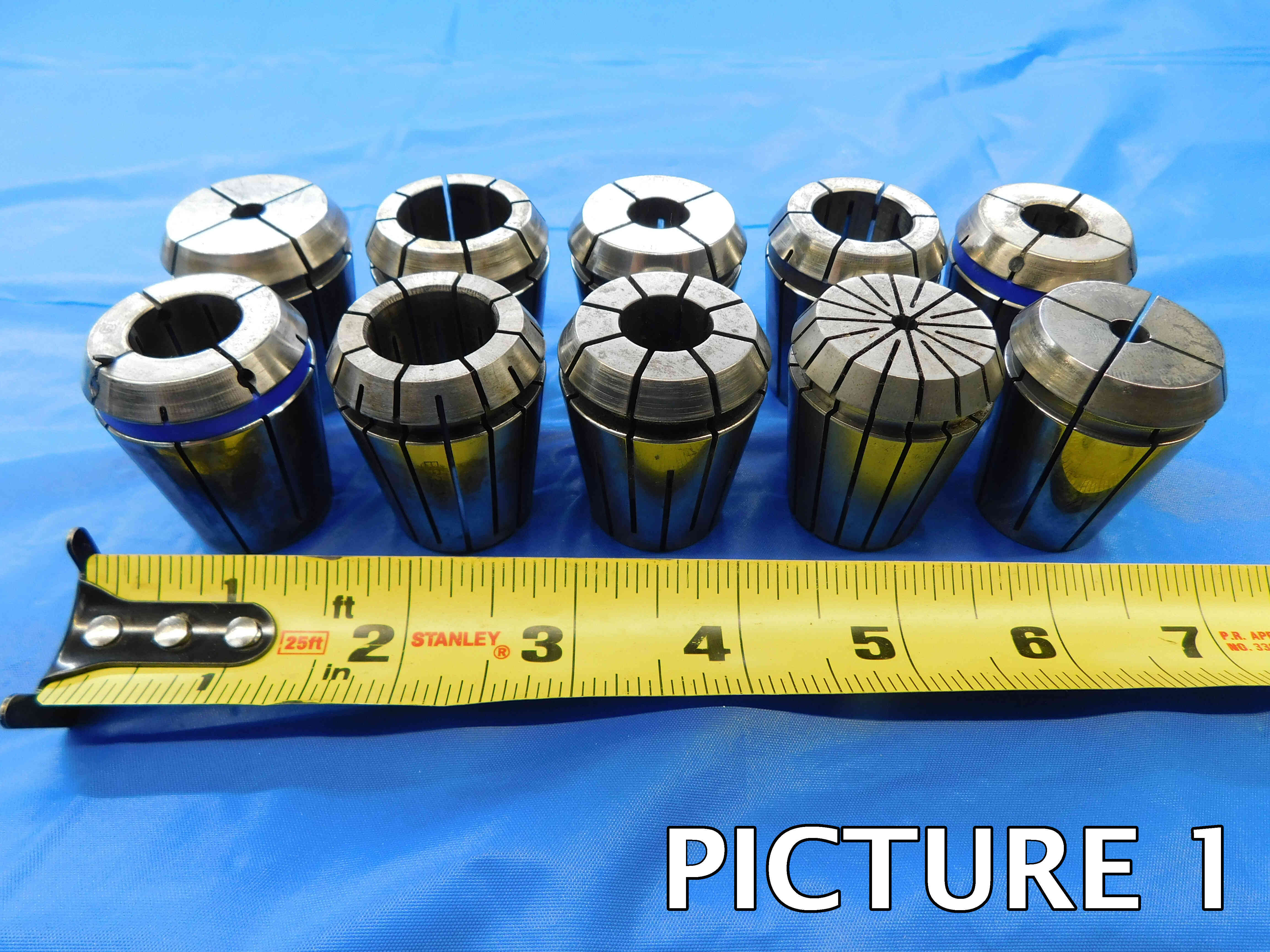
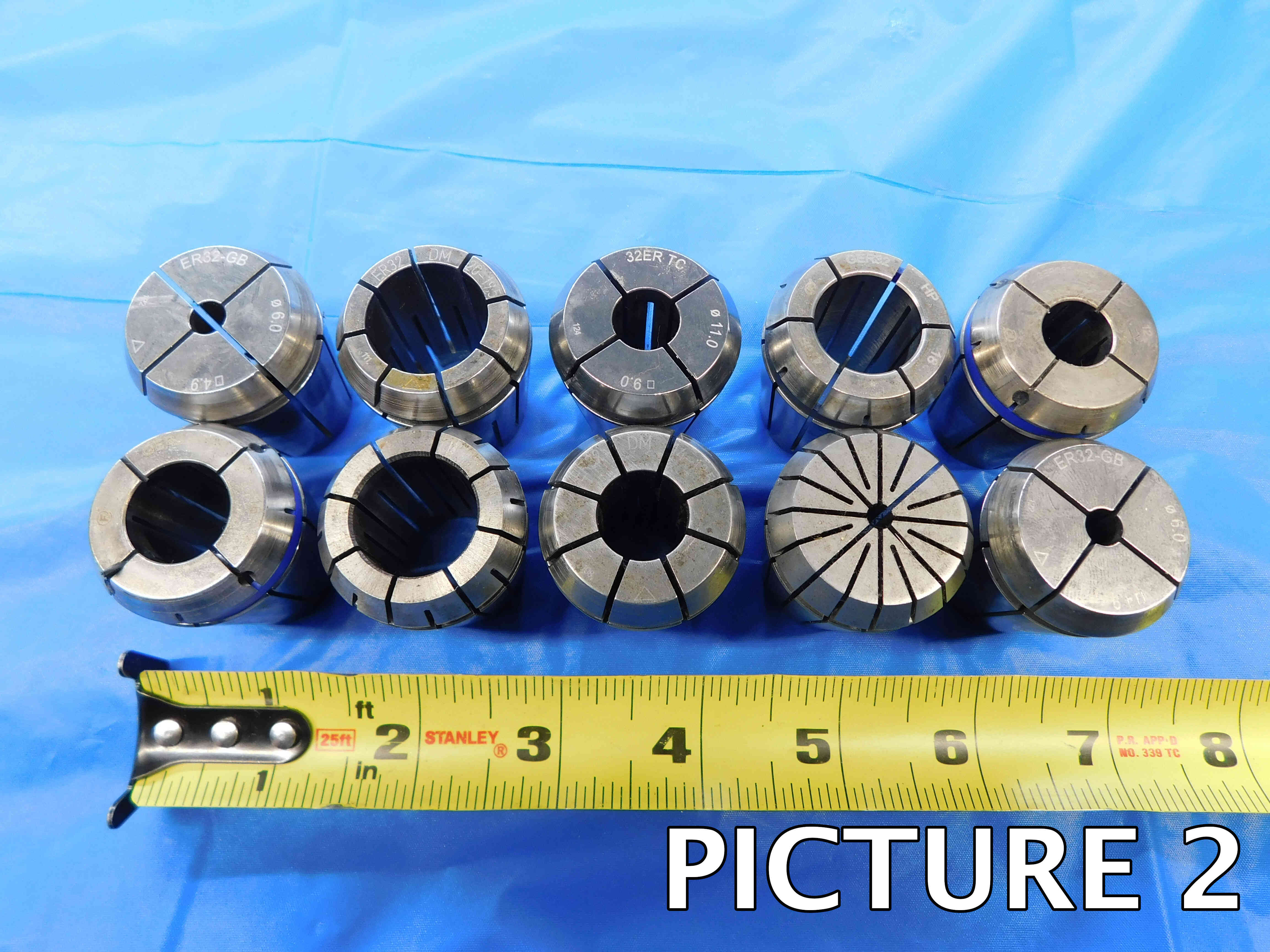
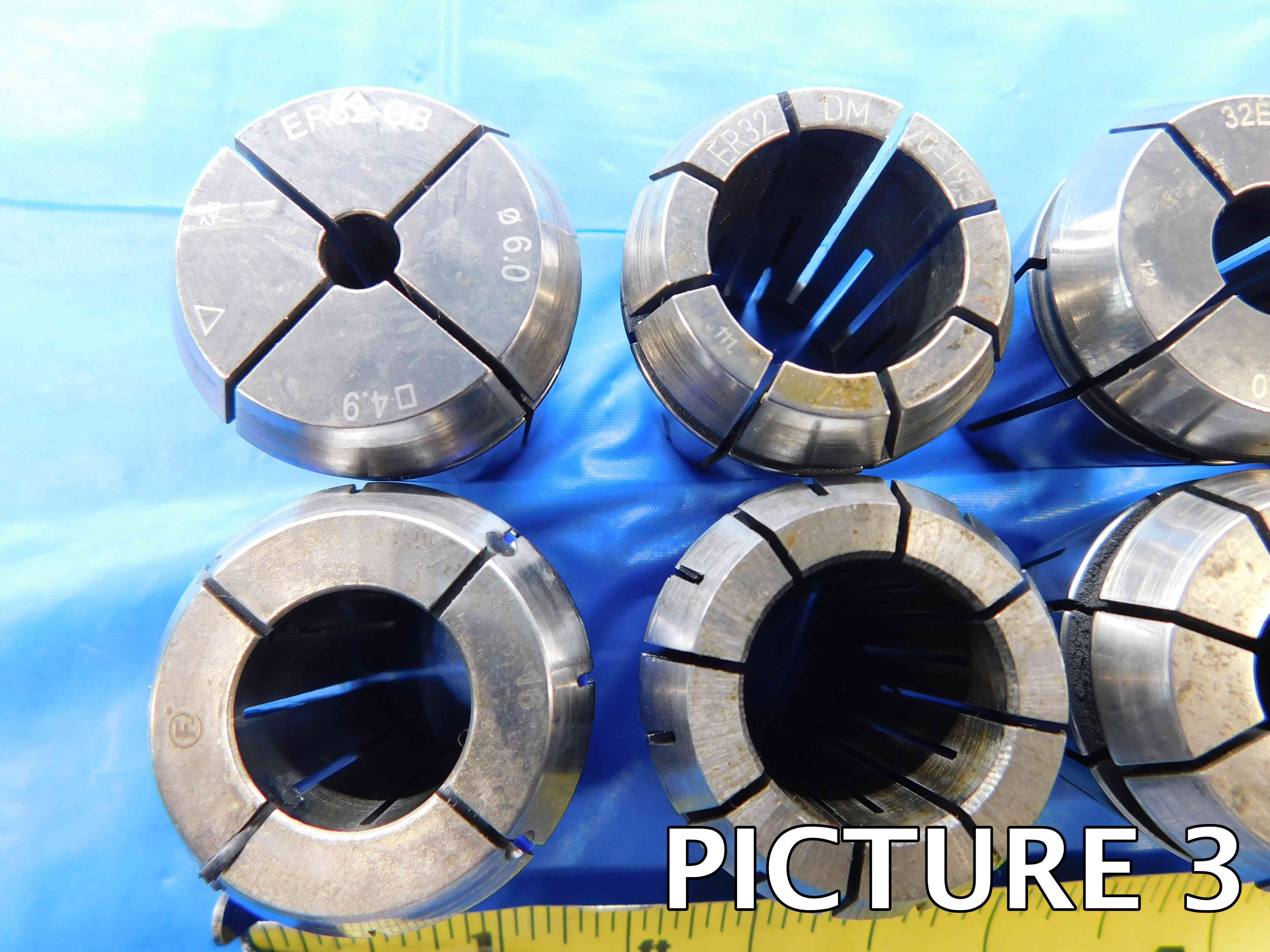
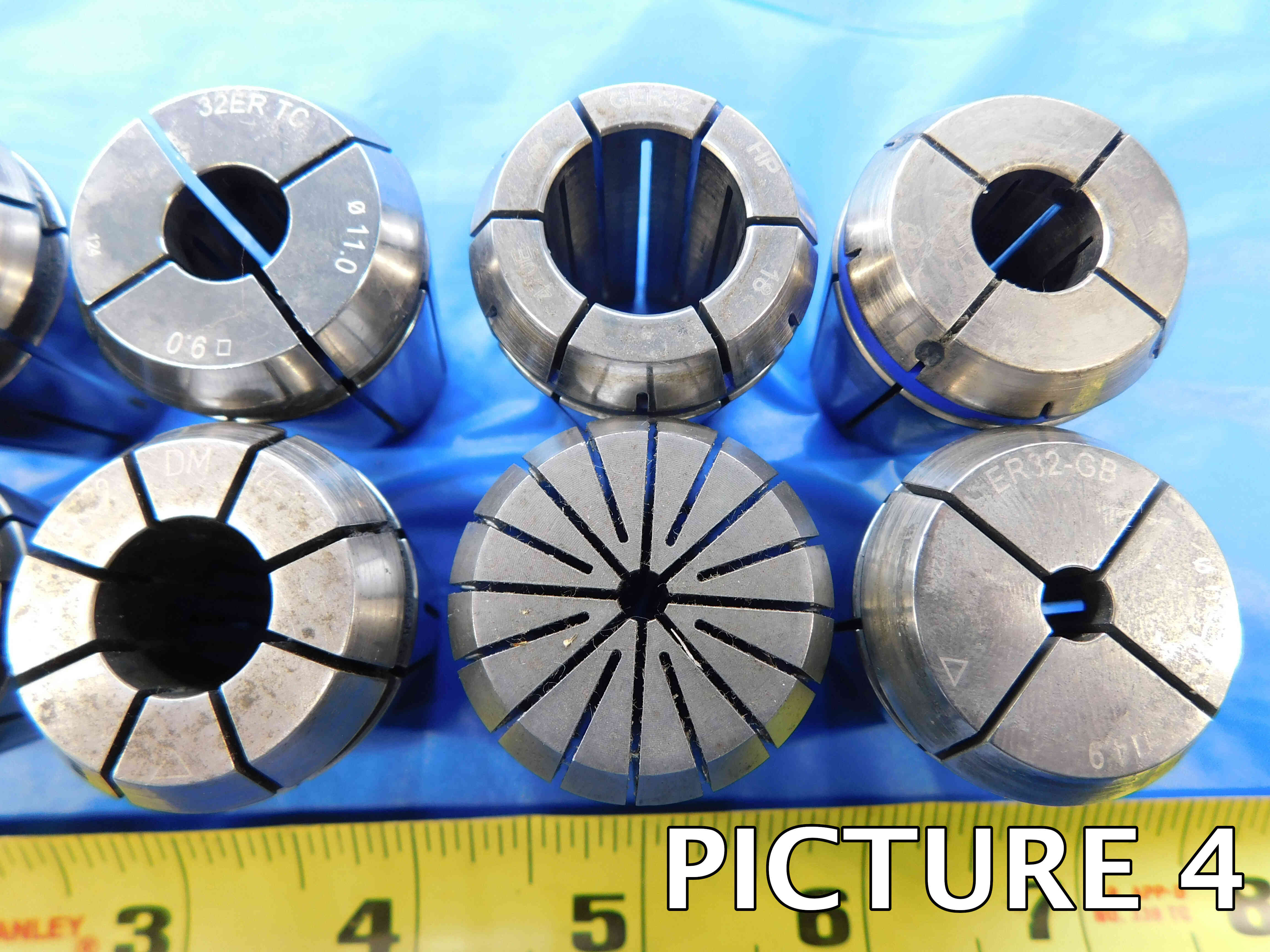
If there is no brand labeled, click the "Unlabeled" button to the right of the Brand cell. Make sure this cell is not left blank, of the listing will not upload properly. Note: Items are often labeled with the country of origin (USA, China, Japan, Poland, etc). This should NOT be entered as the brand, and furthermore should not be included in the listing at all EXCEPT for USA which can be used as a filler.
One of the more common brands you will see on bushings is Global CNC. Their bushings will frequently be stamped with this logo rather than saying "Global CNC" on them:

The collet type and capacity (described in the sections below) do not need to be included in this section - this is primarily for part numbers or any other relevant labeling. If there is no labeling besides the type and capacity (which is common on many collets), leave this section blank.
There are many different types of collets, the most common of which will be described below. Note that most collet types come in a variety of sizes (for example, an ER collet can be ER16, ER25, ER32...) which should be included as part of the collet type. This will sometimes be notated in a variety of ways, but for our purposes the type should always be entered without spaces or dashes, so for example "ER32" and not "ER-32" or "ER 32". Also note that while you may find labeling in which it is reversed, the type should always go before the size - for example, TG100 rather than 100TG.
(Click on an icon below to jump to that section)

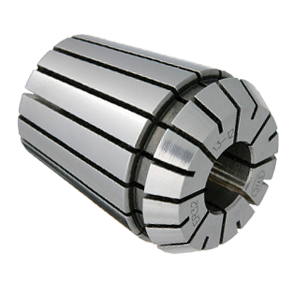
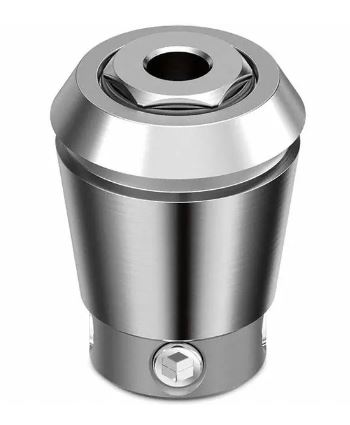
ER collets are one of the most widely used types of collets. They are distinguishable by their two distinct tapers, one at the head and the other going down the body of the collet. They come in seven different sizes which correlate with the dimensions in the chart below:
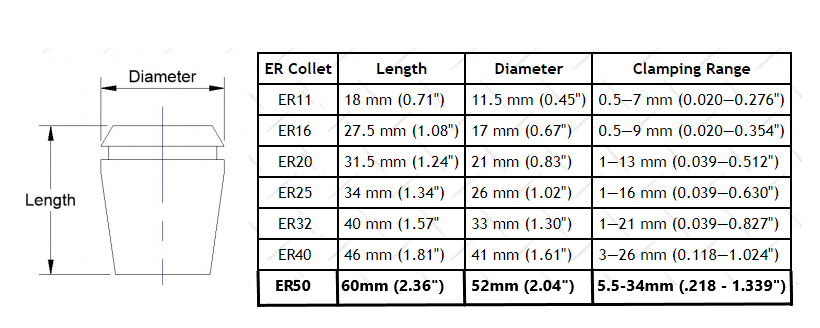
You may also encounter ER Tapping Collets. These will have a square section at the bottom of the inside bore, but may otherwise appear identical to standard ER collets. Some ER tapping collets will have a more distinct appearance, such as the third collet pictured at the top of this section. These will still adhere to the sizing in the chart above.
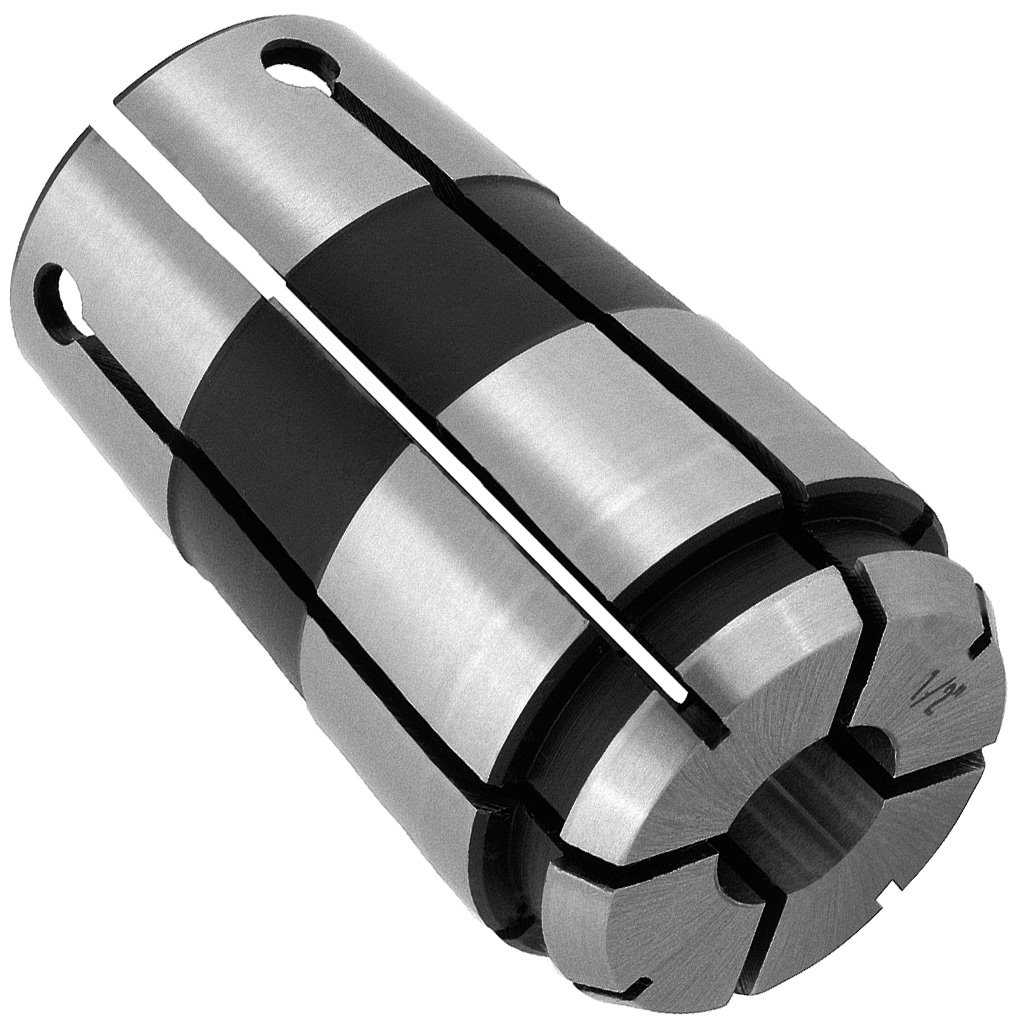
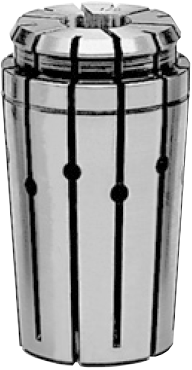
TG collets have a very similar appearance to ER collets, but with a smaller, less tapered head and a longer body. The most common sizes are TG50, TG100, and TG150, however other sizes do exist as shown in the chart below:


SK Collets are very similar to ER and TG Collets. They have a steeper taper which allows for higher gripping forces, but also results in a smaller size range for each collet. They also have a distinctive non-tapered base as seen in the picture above. SK collets come in four different sizes as shown below:

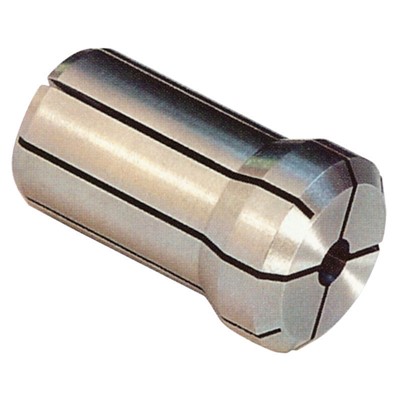

DA Collets can be identified by their straight bodies which taper out slightly to a wider head. The most common sizes are DA100, DA180, DA200, and DA300.

DA Tapping Collets (Series J, K, L & Others)

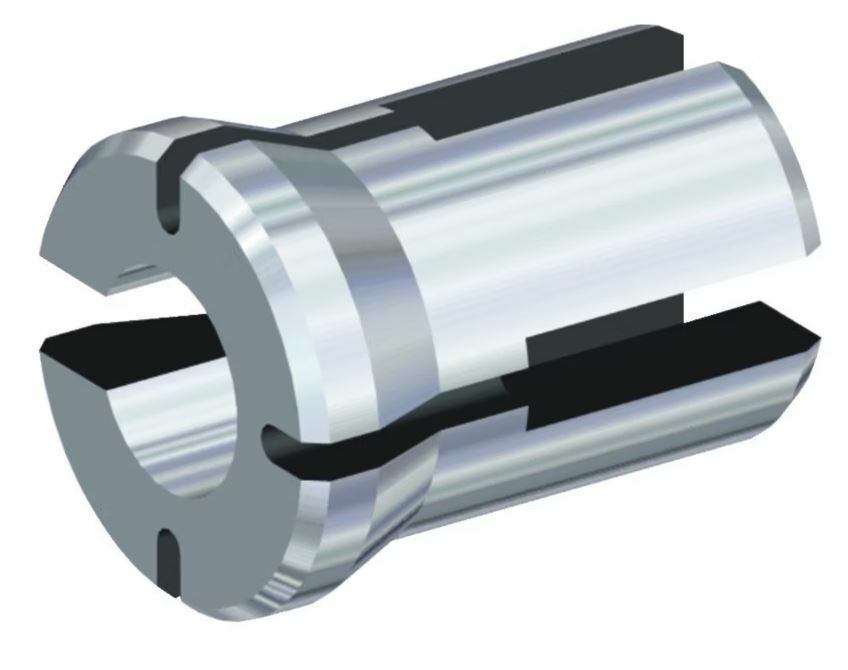
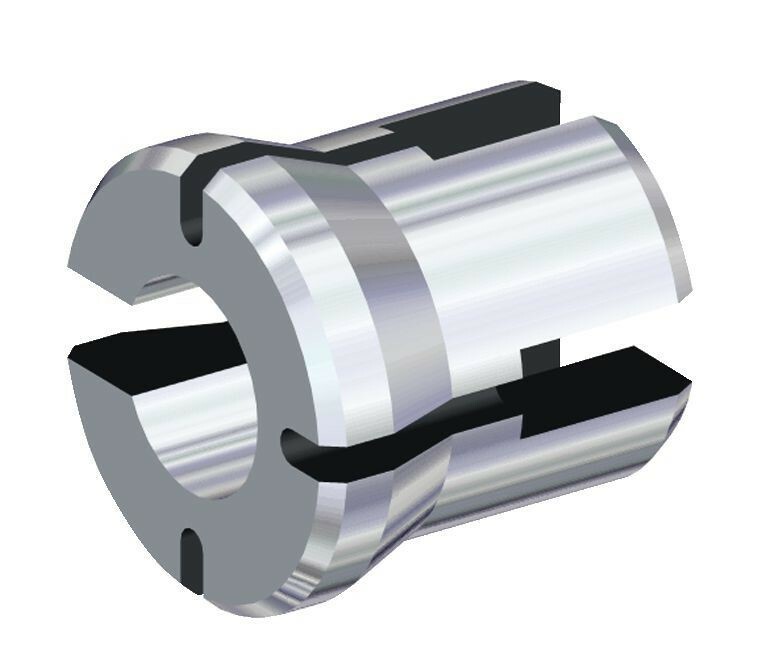
Erickson and Kennametal make a series of DA tapping collets which have distinctive open slots at the bottom which create a square for the tap shank to lock into. Tapping chucks which use these collets will be visually similar to standard DA collet chucks, with the exception of two drive keys at the bottom of the bore which slot into the collet.
DA tapping collets come in three "series": J, K, and L. The series can be determined by measuring the dimensions shown in the images below:
Note: There are also other "series" not listed here which are largely obsolete. The most common of these you may encounter is series F, which is identical to series L except that it lacks the slots present in the other types, and series G, which is larger than series L/F.
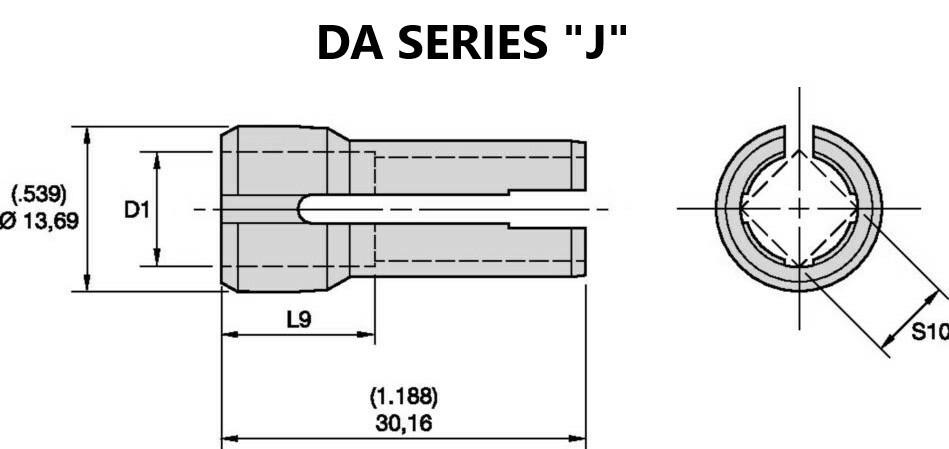
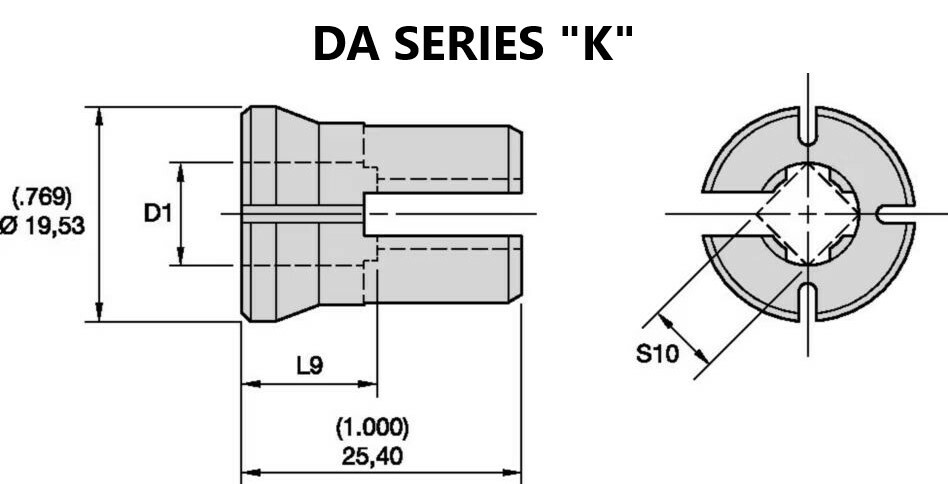
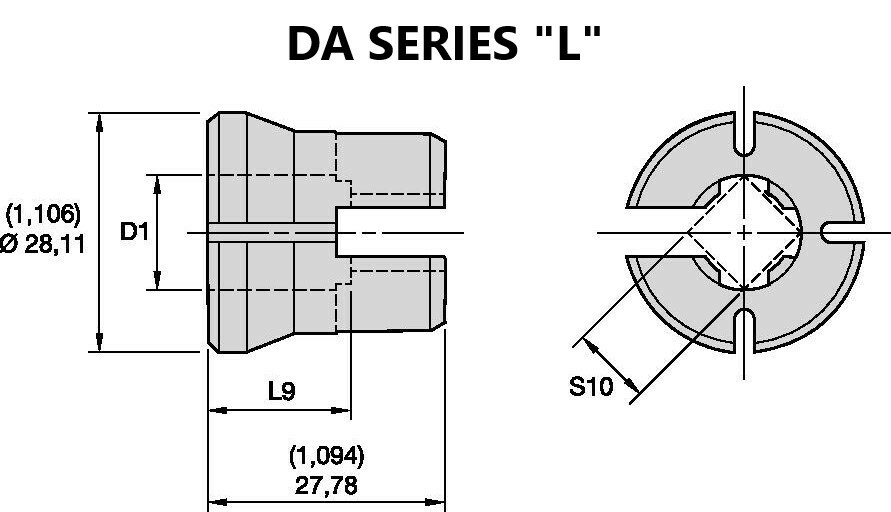
C Collets (Hardinge) - 4C, 5C, 16C etc.

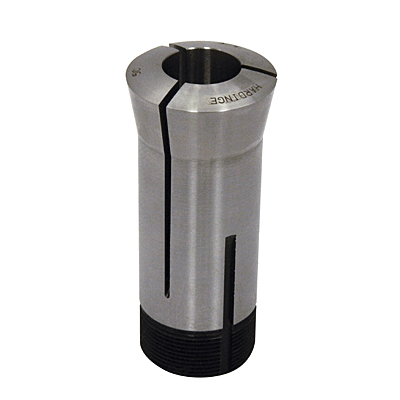
The C Series Collets developed by Hardinge have a straight body which tapers at the head, and most notably have external threading at the end of the body. There are several different types of C collets, the most common being 5C.
While most collets have a round diameter that holds the tool, C collets also come in square and hexagon variations. In addition, some C collets are also serrated on the inside to increase grip. Be as specific as possible when describing these types - for example, you might enter the type for a C collet as "5C Round Smooth" or "16C Hex Serrated".

C Collets (Balas) - C6, C8, C10 etc.

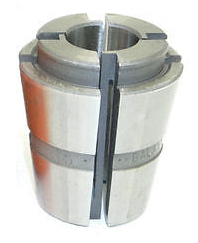
Originally developed by Balas (now Somma Tool), these collets have a tapered body with a reduced head size. They are not as commonly used as the Hardinge C collets described above, and should be easily distinguishable visually.

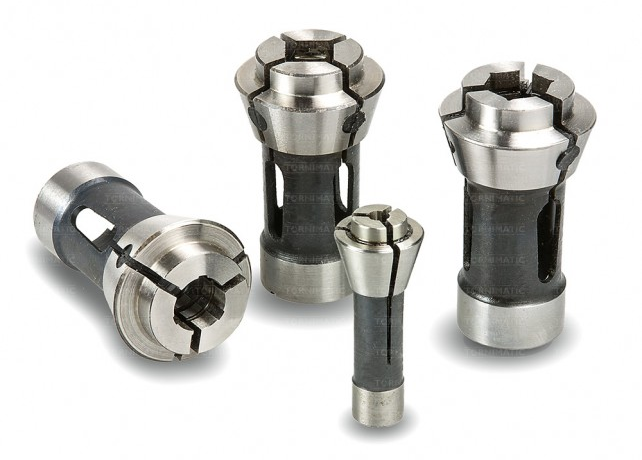
Subjection collets are similar to a combination of both the Hardinge and Balas C-Style collets described above. They do not have threaded shanks, but come in round, square, and hexagon variations like Hardinge collets. There are many different sizes which are described in more detail here.
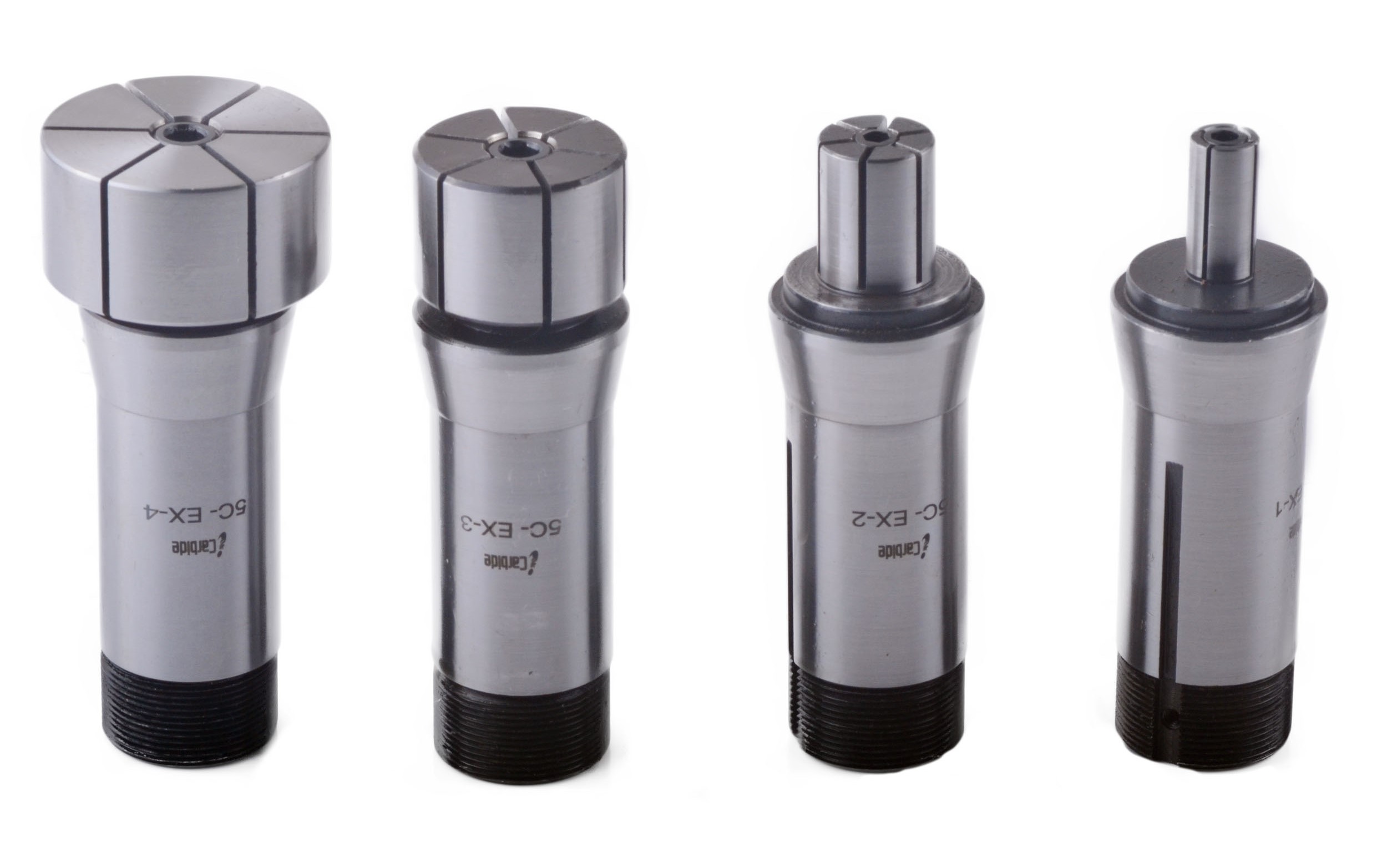
Expanding collets are a type of C collet with an adjustable head used for internal gripping. There will be a range of sizes that an expanding collet can hold, which may be indicated by labeling.
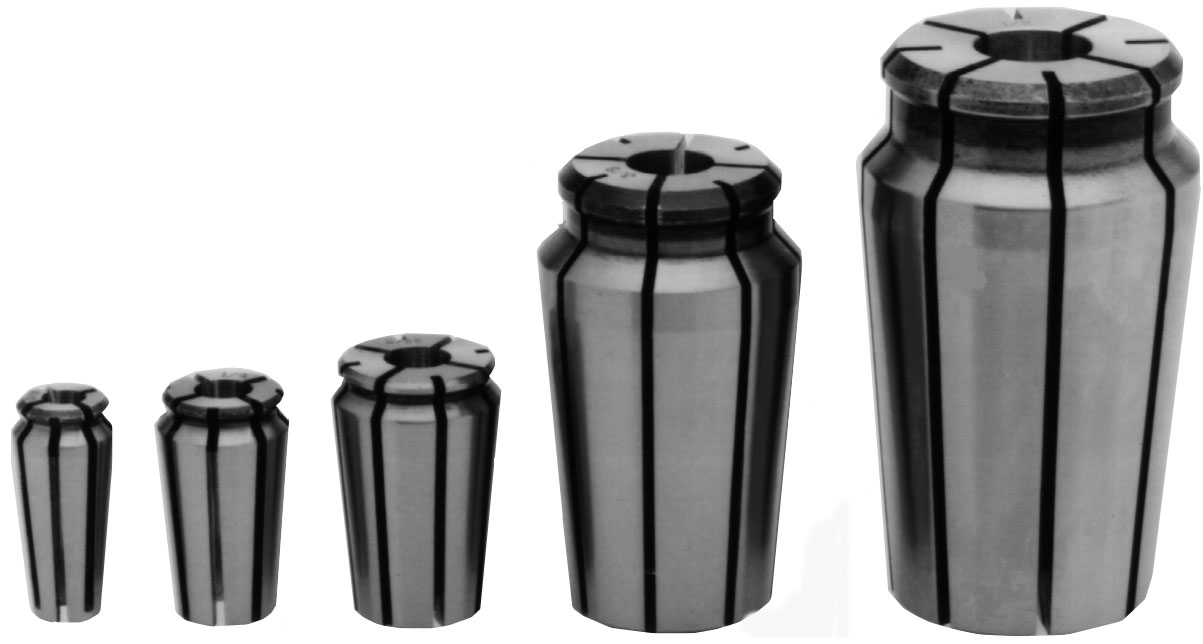
Originally created by Universal Engineering, Acura-Flex collets are visually very similar to TG collets, with the main difference being that the body tapers back towards the head at the top.
Unlike the other collet types described so far, Universal categorizes these collets into "Series" rather than sizes. The series describes the maximum capacity for a collet in that series (for example, the 1/4" Series includes collets with tool holding sizes of 1/16" - 1/4"). When listing one of these collets, include the series in the type - for example, "3/4 Series Acura-Flex".
Other manufacturers make AF collets which are compatible with Universal's Acura-Flex system. The full list of Acura-Flex series with their corresponding AF sizes are listed below:

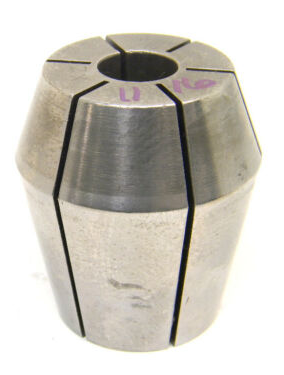
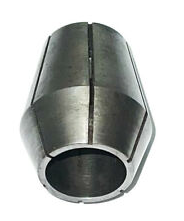
As the name implies, double taper collets consist of two distinct tapers. Their appearance is similar to ER collets, but can be distinguished by the longer taper at the head.
Unlike most other collet types, double taper collets do not use numbers to differentiate between sizes. Instead, each double taper size is described with a letter(s) such as WW, Y, or XZ.


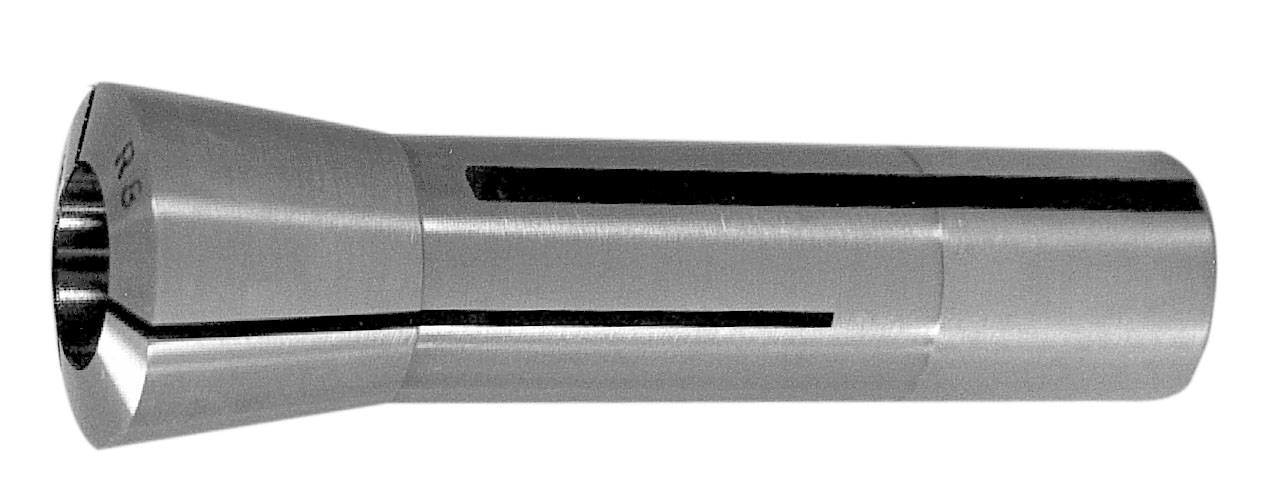
R8 collets are used specifically by milling machines with an R8 spindle. They have a long straight shank which tapers out at the head as well as internal threading at the base.
Unlike other collet types, R8 collets do not come in multiple sizes - all R8 collets will have the same dimensions as the chart below:
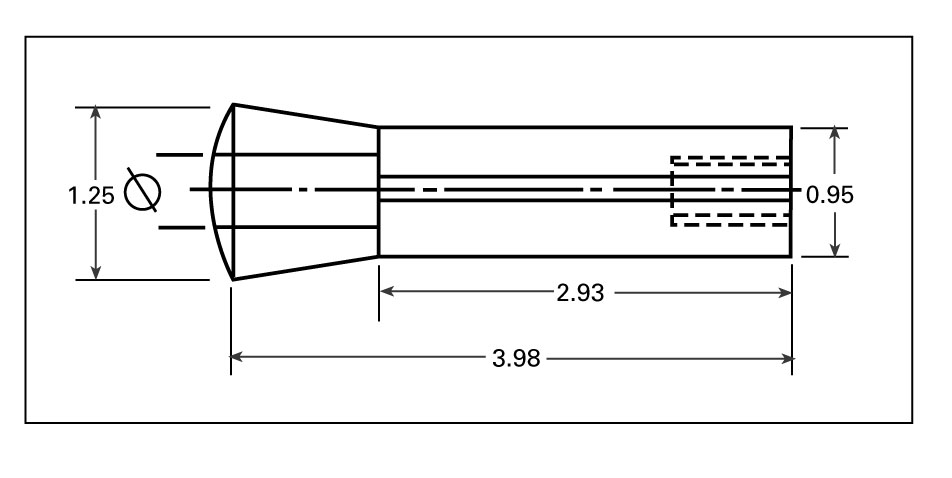

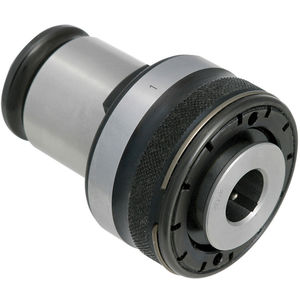
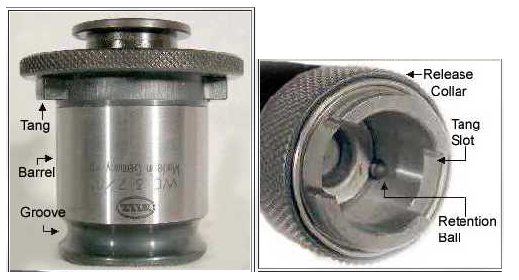
Originally developed by Bilz, quick-change adapters allow taps to be changed out quickly and efficiently in the middle of a job. Many other companies also produce tapping collets which use the Bilz tang-drive system, and any collet that visually matches the ones pictured above can be described as "Bilz-Style".
Like the other collet types above they come in different sizes, designated by numbers. The type should be entered following this format: "#(x) Quick Change Tapping", where (x) is the size number.
If the size is not labeled, it can be determined by measuring the diameter of the barrel (M) and comparing to the chart below:
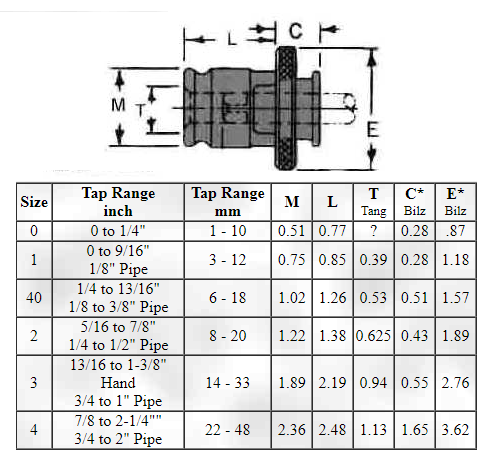
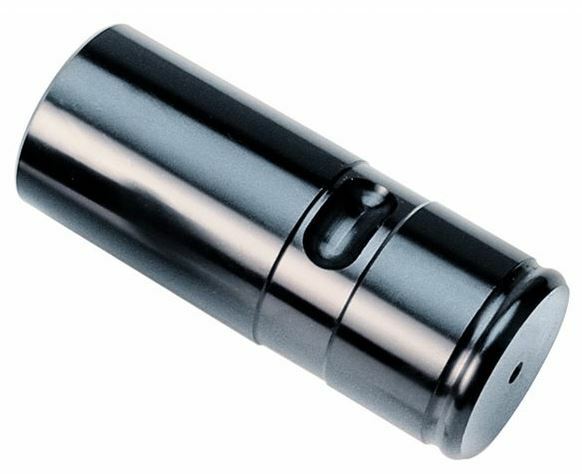
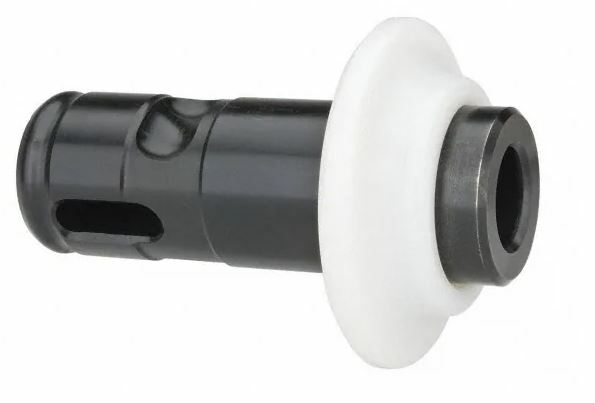
Magic Chuck Collets (also sometimes called AA Collets) are often mistaken for bushings or straight-O.D. Morse Taper adapters. They have a straight outer diameter, a Morse Taper inner diameter, and a horizontal groove about 2/3 down the body which is used to lock into the special Magic Chucks that hold them. They sometimes have collars such as in the second image above.
There are five different Magic Collet sizes, determined by measuring the O.D. and comparing with the chart below:
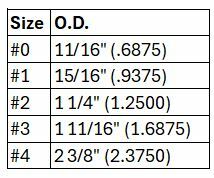
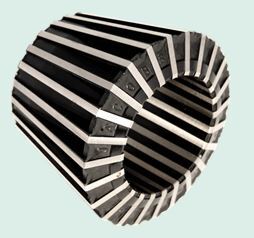


Jacobs Rubber Flex collets are made of hard rubber with metal inserts. They come in three different varieties:
Lathe Chuck Collets



Lathe chuck collets will be the largest of the three, having a large end O.D. of 2.25". They will also typically have more metal inserts than the other two types, as many as 24 on the largest capacity options. They are available in several different sizes ranges corresponding with the part numbers shown in the chart above.
Tapping Chuck Collets



Tapping chuck collets will be the next largest, with large end O.D.'s between .860" and 1.296". Like the lathe chuck collets, they come in multiple sizes with different holding ranges. Because these collets are intended for holding taps, it can be useful to also include the corresponding range of tap sizes in the listing, which can be found below:
J420 / 9747 : 3/16" to 5/16" (M4.5 to M8)
J421 / 9748 : #0 to 1/4" (M1.5 to M6)
J422 / 9751 : 1/4" to 3/8" (M6 to M10)
J423 / 9817 : #0 to #8 (M1.5 to M4)
J440 / 0749 : 5/16" to 5/8" (M7 to M16)
J441 / 9750 : 3/16" to 3/8" (M4.5 to M10)
Die Grinder Collets



Die Grinder Collets will be the smallest of the three, with a large end O.D. of .590". They have a shallower taper angle than the tapping chuck collets but will otherwise appear very similar. There two different size ranges which correspond with the part numbers shown above.
Every collet has a specific tool holding size capacity. For non-tapping collets, this is simply the inner diameter of the collet which can be measured with calipers if it is not labeled. This directly corresponds to the shank size of the tools that the collet is able to hold. Note: Due to the flexible nature of many collets, it can sometimes be difficult to get an exact measurement. You should generally be able to get a measurement that it close enough to an "onsize" that you will be able to tell what it is, but always contact your trainer if you are not sure.
For Magic Chuck collets, the capacity will be a Morse Taper size which can be determined using the charts here. It should be entered following the format: Morse Taper #X (Replacing X with the corresponding MT#).
For tapping collets, the capacity is not so straightforward. The capacity of a tapping collet refers to tapping diameter and NOT shank size. This is because taps have standardized shank sizes, so all 3/4" taps have the same shank diameter, all 1" taps have the same shank diameter, and so on. Pipe taps have a different set of standard sizes from other tap types, and may be notated with "P", "NPT", or "Pipe" in the collet's labeling.
Some tap diameters are described using number sizes, which are listed below with their decimal equivalents:
#0 - .060" #5 - .125"
#1 - .073" #6 - .138"
#2 - .086" #8 - .164"
#3 - .099" #10 - .190"
#4 - .112" #12 - .216"
***Some pipe taps may have more than one standard shank/square size
Tapping collets usually have their capacity labeled, but if it is not labeled the tap size can be determined by measuring the collet's inner diameter and comparing to the shank sizes in the charts below:
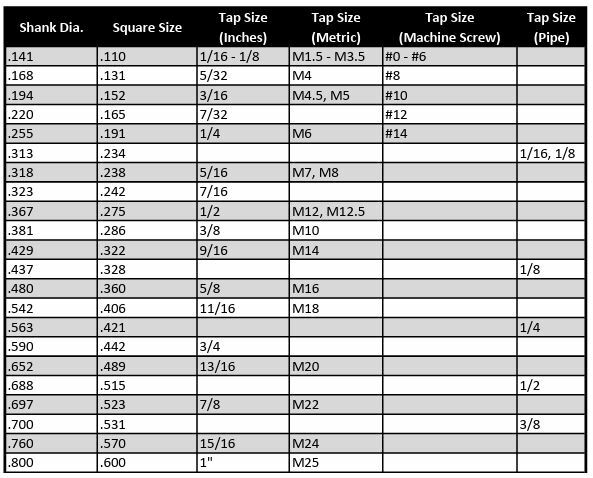
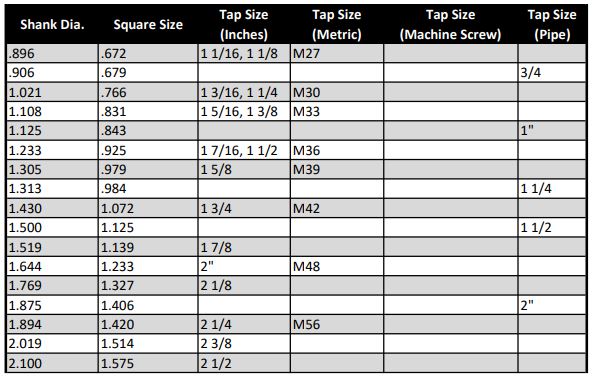

The "Filler" section is used to add other relevant information to the title which is not covered by the other sections. Fillers can be a good way to increase a listing's visibility - we always want to include as much information as possible that we think a customer might be searching for in order to make sure that our listing is coming up in their search results.
There is not necessarily one right answer when it comes to fillers, and often it will be up to you to decide what should and should not be added as filler. Collets frequently have extra space for fillers, so here are some suggestions for what to include:
-Secondary labeling or branding / product names
-"USA" or "USA Made" for any US Manufacturers (you may need quickly research a brand if you are not sure since this will not always be specifically labeled)
-Decimal equivalents for the collet's capacity(s)
-For tapping collets: "Pipe Tap" or "Hand Tap" (depending on which type of taps the collet holds), "Adapter"
-R8 Collets: "Bridgeport"
-General Collet Fillers (to be used when no other significant fillers remain): "Milling", "Lathe", "CNC", "Precision"
Note: Keep in mind that titles have a maximum limit of 80 characters.
Additional Specifications & Special Condition
The Additional Specifications section should be used for any secondary labeling or additional measurements that do not fit in the other sections of the listing. There is no character limit here so any relevant information that is not already covered should be included (within reason - we don't want to overload the listing with unnecessary information, so ask your trainer if you are not sure whether or not to include something in this section).
The Special Condition section should be used for any special notes about the item's condition such as damage or modification. Try to be specific when describing the condition, and reference pictures that point out the damage / modification if applicable. General wear and tear does not need to be mentioned, but anything that will affect the tool's usage should be included here.
Once all information is entered, click here for the next steps.
